Kodagu, the lush green forests in the faint backdrop of the hill range, graze each other as the warm light pours through the valley. The boundaries of small towns slowly melt into the green with flowering plants blooming by the roadside. Also known as the Kashmir of South India and Scotland of India by the British, the sunlight trickling through the hazy landscape of Coorg is a dream setting for a photographer.

The facade of Huilekere House in our team member and artist Rashmi Manodhas rendition.
After an eighteen kilometer drive from Virajpet to the small village of B Shettigeri and another five kilometer downhill, mesmerized by the strong scent of coffee flowers past the Koottiyal lake, welcomes you to the Huilekere House, peeking beyond the lofty coffee plantations seated in a 200-acre land in the Kerala-Karnataka border. The birds chirp merrily along the burbles of the river as the dewdrops settle slowly on the coffee berries. The scent of the mouldy dried leaves infuses the chilly atmosphere, with every step feeling more in tune with nature.
At night in Coorg, when I was talking with the estate manager Husainika in the courtyard of the estate, it unexpectedly rained like a guest. The rain fell on the coffee plantations that lay outside.. the cold wind.. fell into a great feeling. An unforgettable night in beautiful Coorg.

The front elevation of Huilekere House
The design of the house pays homage to the richness of the traditional Ainmanes resided by the Kodava clan. The Kayale (the wide front veranda), Chadara Kamba (large square wooden pillars that taper upwards), and Munds (square central courtyards that are open to the sky) are characteristic features adopted from the Coorg Ainmanes.

Chadara Kamba supporting the verandah
The Chadara Kambas support the courtyards and the verandah, while the roofs slope inside the courtyards and the four exterior walls. The rafters and the joinery fit perfectly, which involves skilled wood craftsmanship. It is one of the three types of Ainmanes called the Mundmane (a square structure built around a mund), followed by the Othe Pore and Madakmane. The extensive, wooden slab seating called the Aimaras was a significant feature of these houses. The one on the left was used only by the founder of the clan or the Karanavas. It was the reserved seating for the Pattedar or the head of the family.
The house is raised on stone pillars instead of mud. The long, polished wooden slabs fixed to the low parapets called ‘aimara’, which sit on the front verandah, evoke the grandeur of tradition. The courtyards of this house encourage natural light and ventilation. All other rooms lead to corridors around the courtyard. The tiled roof slopes down to the two courtyards and four sides of the house. The service block containing the laundry and servant quarters is located across the entrance to the house. Elaborate woodwork done by skilled craftsmen can be seen throughout the house. Thus, this traditional style house is proof that aesthetic creations can be created without any additional decorative elements on the elevation.

View of the front verandah
Strolling along the extensive laterite stone pathway as the breeze from the trees brushes across the face, it takes you back to the past glory of the Kodava heritage. The lush green grass adds a pop of colour that compliments the facade extending twenty six meters horizontally.

The stone pathways leading to the entrance
The flight of steps carved intricately from stone leading to the entrance on a structure built on a stone plinth instead of mud stops at the Kayale. There are two entrances on the western and northern sides of the house. The majestic scale is a recognizable aspect of the Ainmanes, ranging from ten to twenty meters. Upon opening the main door, two Munds with elegant seating and Chadara Kambas emerge into view.

Steps carved intricately from stone
The courtyards encourage natural light and ventilation into the house, as the narrow corridor circulates and connects the rooms. Paintings on the wall, the carvings on the pillars, the wooden frames, and the capital beams celebrate their love for fauna and flora.

View of the interior courtyard

View of the exterior courtyard
To lend a signature touch to the house, terracotta tiles were used in the verandah and in the interior, natural stones have been used. The residence is adorned with numerous antique treasures on display. The dark-coloured furniture and wall decorations provide a striking contrast to the light-coloured interior. A warm lighting with coloured and pattered decorative fixtures is used to light up the house as it feels natural and fosters relaxation. All in all, this summer residence emanates warmth and comfort by striking the right balance between neutral beige hues and pops of colour.

Living room of the Huilekere House
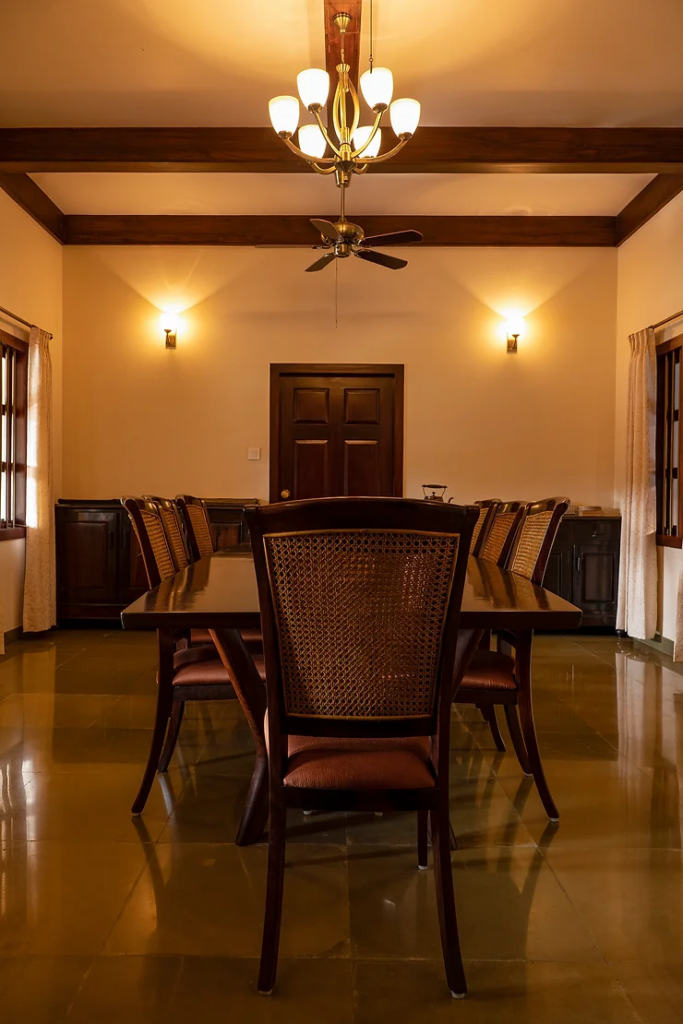
Dining room of the Huilekere House
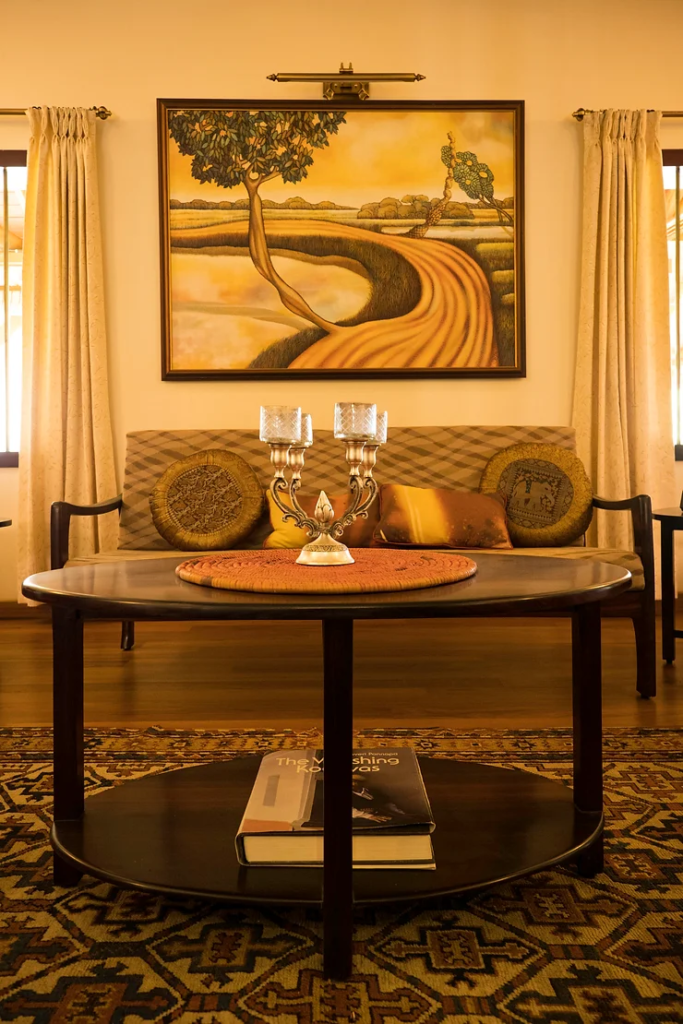
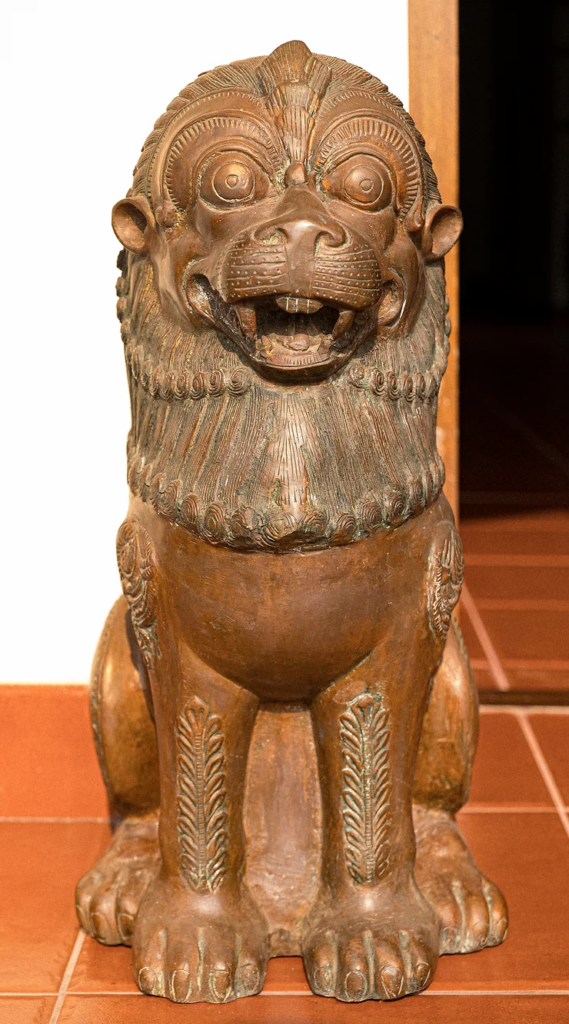
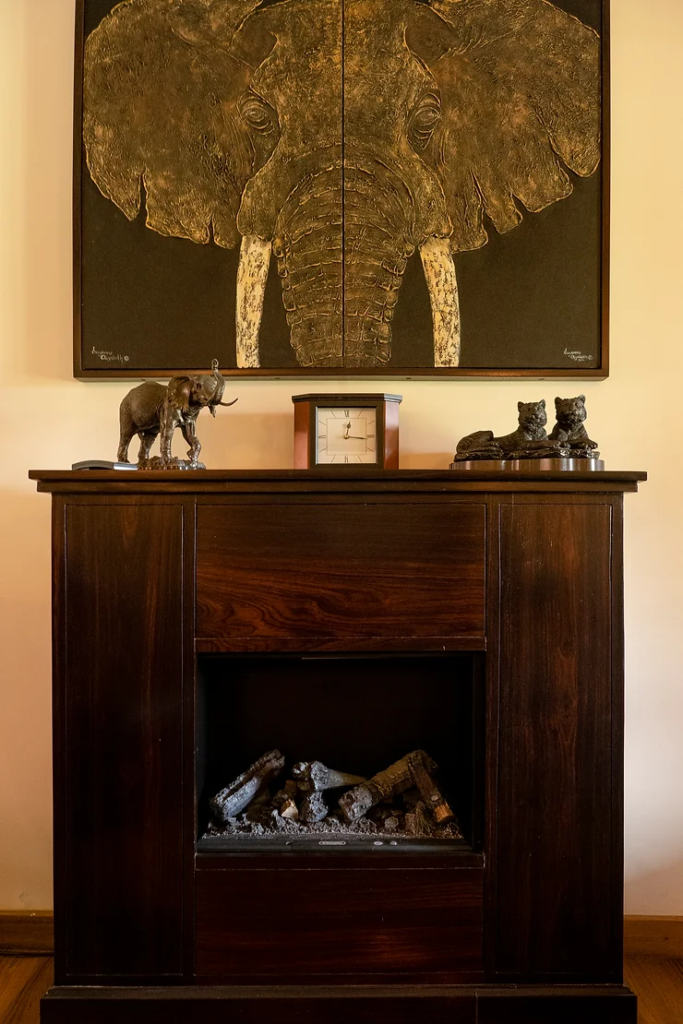
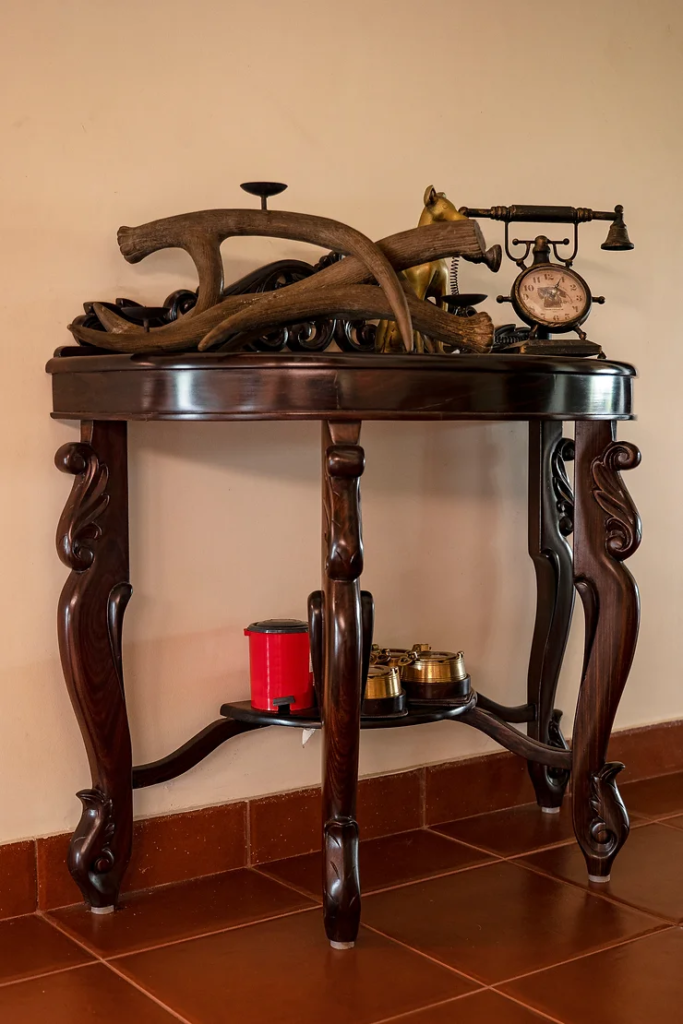

The residence is adorned with numerous antique treasures on display

The timber roofing in Huilekere House
Designed by Benny Kuriakose and Associates, it heeds the concept of “form follows function”. The beauty in the simplicity confirms that additional decorative elements are unnecessary for the aesthetics of a building. Coorg can make any voyager fall in love with the scenic beauty anew with every visit, invoking memories of the timeless grace that will continue to follow for a lifetime. This residence is a beautiful and elegant space where you can enjoy the beauty of nature all around you.

Coffee plantation around the Huilekere Residence

Coffee flowers in the plantation

Purple passion flower
https://www.bennykuriakose.com/post/huilekere-house-a-rendition-of-coorg-ainmane
The photographs were captured by T.P. Naseef.
source: http://www.bennykuriakose.com / Benny Kuriakose & Associates / Home / by Naseef T P October 12th, 2022

